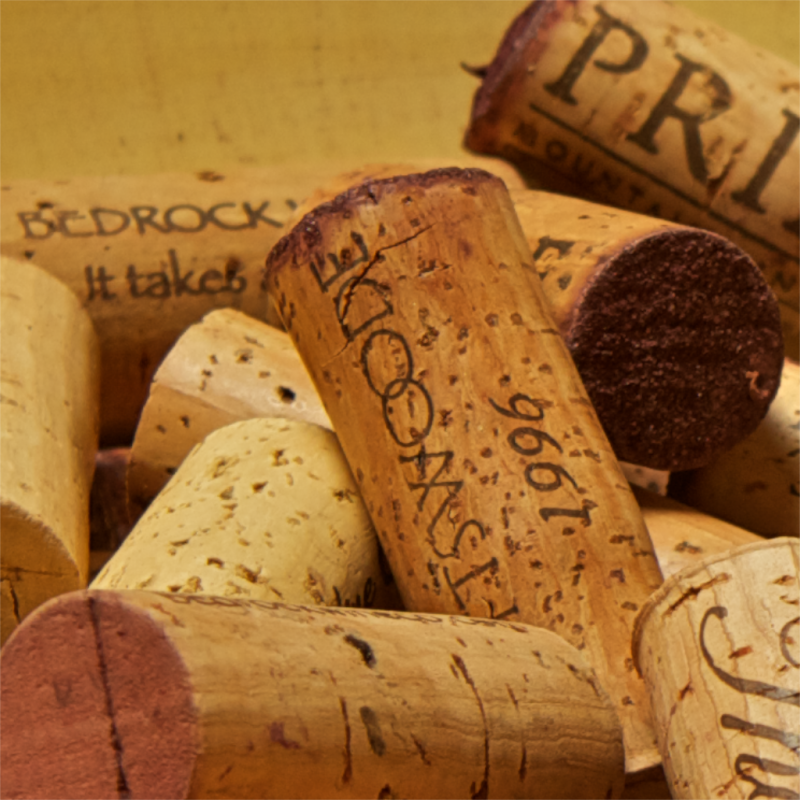What do you do with your old corks?
Like many wine drinkers I do have a love-hate relationship with corks. Like so many crafts, there are some beautifully created corks, and there is a slew of mediocrity. Some years ago I showed up late to a personal  wine tasting at a tony Napa Valley winery. The winemaker explained that our time would be cut short, because she had to catch a flight to Portugal where she would be inspecting corky bark for the next vintage of her wine.
That’s passion. Like the architect or designer who flies to Italy to examine the marble quarry to choose the exact color and vein symmetry of marble for a new building or home, some winemakers are so incessantly passionate about every detail of their wine, or should we call it art. I think so. That’s the difference. Passion and commitment to quality.
Then there are others who are just happy to mull in mediocrity. Some do this because they can’t see or understand the difference. Others simply because the dollar is driving their decisions.
When it comes to corks there is no question of the controversy. First, because cork is once a living thing thing and then harvested to be used as a closure for wine, it is subject to all those natural things that can happen to a living organism. Some corks unfortunately get tainted due to bacteria or other nasty things that only scientists can truly explain. When this happens the taint finds its way into the wine resting in the bottle that is secured by the tainted cork. This is particularly troublesome and disappointing for those who open a bottle of wine they have been saving for many years, only to have their eager anticipation and excitement suffocated by a corked wine.
Some wineries try to do everything to prevent corked wines, even traveling to Portugal and France where they carefully choose the ideal batch of corky bark. That stats on corked wine are also controversial. Perhaps information and misinformation propagated by cork producers, screw top manufacturers, composite cork companies and plastic and alternative closure companies. But some stats show that 10 percent of all wines secured with real cork are tainted by bacteria. That’s a lot of wine.
And that’s why there is such a movement toward screw tops and alternative closures. These alternative solutions get those passionate winemakers, wine collectors and the wine elite into a fervor. Arguing that the porous quality of real cork allows wines to slowly oxidize over time and thereby provide the environment that truly will age and change a wine over its lifespan in the bottle. Others think this is hogwash. Still others are unwilling to change because they feel that a screw cap or other closure takes the romance out of opening a bottle of wine. Perhaps that’s where I fall. But I’m not one to stick to “the way it’s been done for hundreds of years” simply because it has. I guess some people still write real letters and lick stamps and go to the post office. But I’ll bet that they use e-mail too; or text? There’s a time for writing a personal letter and mailing it, for sure. And I still cherish and save in a shoebox stuffed in my closet those letters, old and new. But I don’t get many traditional letters anymore.
I do buy bottles of wine secured by composite corks, screw tops, plastic corks and new-fangled glass stoppers with a plastic or some composite type of o-ring. Virtually every gallon or liter of wine made in New Zealand goes into bottles secured by screw tops. It’s virtually impossible to find one with a cork.
Some will argue that because it takes decades to grow a cork tree, that the environmental consequences of thinning out the cork forests spell doom. I love the redwoods, too. But I believe managed forests and a powerful cork lobby will continue to argue for corks. And I’m sure my friend the winemaker in Napa Valley will find an excuse for a European excursion to examine her corky bark and probably a lot more.
All this is maybe why I have bags of old corks sitting around. I used to save every one. But now I’m picky. I’ll keep the ones that perhaps seem to be of the higher quality, perhaps personally selected by a passionate and committed human being. And that’s something that I admire.
I took the picture used in this post last night. Which corks look like the passionately selected, and which look like they were churned out in a factory?
What do you do with your corks?







I say screw the old corks and plug in something cleaner, greener, and more energy efficient. Hell, I’m cool with the bags if they use less material to make and CO2 to transport. Much like the e-mail vs the letter, it’s the content that matters, not the container.
Very good point, Dr. Daniel Dan Tastic! The bags, though. Well, they’re still plastic. Drink beer out of plastic bottle? Even a soft drink tastes better out of glass. And plastic bags? Where do they end up? At least with glass we can send it back to earth. But content is king and after bottle after bottle of tainted wines, I welcome the screw top. But those plastic corks certainly are tough on corkscrews and muscles!